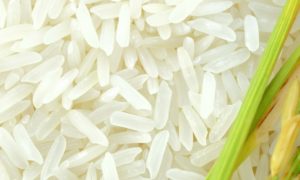Philippines : Tariff cuts shore up rice supply amid less output

Despite a predicted 3% decrease in the Philippines’ rice production due to El Niño and La Niña impacts, the supply of milled rice is expected to rise in the 2024-2025 marketing year. Lower import tariffs are expected to boost imports. The USDA-FAS projects milled rice production at 11.95 million metric tons, down from 12.32 million in 2023-2024. Weather-related challenges, such as typhoons, have affected domestic output.
Despite the anticipated decline in output, the supply of milled rice in the Philippines is expected to rise during the July 2024 to June 2025 marketing year, thanks to lower import tariffs, according to estimates by American researchers.
This is predicted along with expectations that the Philippines’ output of milled rice might decrease by 3 percent due to the negative impacts of El Niño and La Niña phenomena.
The United States Department of Agriculture’s Foreign Agricultural Service (USDA-FAS) projects Philippine milled rice production to settle at 11.95 million metric tons (MT) from the estimated 12.32 million MT produced in the 2023 to 2024 marketing year. Before that, in the marketing year 20222023, the USDA-FAS pegged the milled rice output even higher at 12.62 MT.
“The succeeding La Niña and the typhoon season in [the fourth quarter of 2024] put additional pressure on domestic palay production,” the USDA-FAS reported.
La Niña is a climate condition that brings greater than usual rainfall to the Philippines while El Niño causes the opposite.
“After the El Niño, the La Niña caused successive tropical cyclones beginning at the onset of [marketing year 2024-2025], which have negatively impacted domestic food production, especially rice,” the American agency said.
The aggregate volume losses on palay or unmilled rice production totaled 519,783 MT as of November this year, based on the tally of the Philippine Department of Agriculture’s Disaster Risk Reduction and Management Operations Center.
“Industry contacts also report that farmers were unable to replant, as typhoons occurred close to the harvest season [which begins in September and peaks by the end of October],” the USDA-FAS said.
The USDA-FAS report also noted that the government usually prepares its seed assistance for the next cropping season, yet farmers sometimes prefer cultivating cash crops such as vegetables over grains—like rice or corn—after typhoons due to a shorter harvest time.
To read more about Rice News continue reading Agriinsite.com
Source : Business Inquirer















